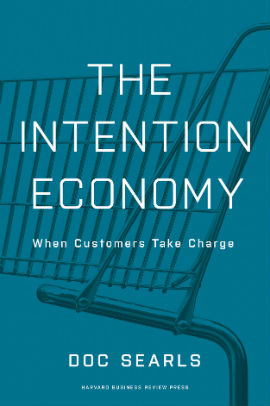
Thomas Harper’s Online Etymology Dictionary offers this for the origin of gimmick: “1926 (in Maine & Grant’s ‘Wise-Crack Dictionary,’ which defines it as ‘a device used for making a fair game crooked’), perhaps an alteration of gimcrack, or an anagram of magic.” Among other definitions, Merriam-Webster says gimmick means “a trick or device used to attract business or attention a marketing gimmick.” There are many marketing gimmicks, but all serve to both attract shopper attention and mask intrinsic worth--at costs to both the seller and the shopper. For example, the “75¢ off any two Old El Paso products” offered to me by the scanning gizmo at Stop & Shop has nothing to do with the worth of those products as food, or the value of Old El Paso as a brand.
In fact, the discount demeans the brand. Both stores and brands are surely aware of this, and perhaps even build that cost into their pricing calculations. But the masking is still there, and that’s one reason why Trader Joe’s (and a handful of other major grocery sellers--notably Whole Foods) offer a single non-discount price. But they remain the exception. Gimmickry still rules.
In Our Dumb World, which may be the funniest book ever written, The Onion calls the United States “Land of Opportunism”--a place where lotteries “allow thousands to lose instantly” and “the #5 combo” is listed under “traditional cuisine.” In her book Cheap: The High Cost of Discount Culture, Ellen Ruppel Shell digs deeply into the tragic truths that make The Onion’s funny one-liners about the United States ring so true. About the aftermath of the recent financial meltdown, she writes,
Our fixation on all things cheap led us astray. We have blundered before and risen chastened but stronger. From this latest fiasco we have learned the hard lesson that we cannot grow a country and a future on a steady diet of 'great deals.'
Americans love a bargain, and that is not about to change. But sometimes what looks like a bargain is really just a bad loan. Discounting is also a drug, which best explains why a business so doomed as Groupon’s original coupon game not only got traction, but a $5 billion to $6 billion takeover offer from Google that the founders turned down.When I first saw that news I thought it was an Onion story. In fact, Groupon’s putative valuation at this writing has soared as high as $30 billion. According to Andrew Ross Sorkin, editor at large of the New York Times DealBook, that high-hype mark was achieved by Lloyd Blankfein, CEO of Goldman Sachs, who “flew to Chicago personally to pitch his firm to underwrite what was supposed to be the hottest initial public offering of the year.” The pitch succeeded. Later (on October 17, 2011), Sorkin wrote, “The valuation will be lucky to be more than $10 million.”21
I’m no analyst, but I can say with confidence that Groupon is a value-subtract for nearly every enterprise  that buys its jive. Its worth to the economy is less than zero because it is pure gimmick, as were Green Stamps and as are nearly all the half-billion promotional sites that come up in a Google search for “coupons.”
that buys its jive. Its worth to the economy is less than zero because it is pure gimmick, as were Green Stamps and as are nearly all the half-billion promotional sites that come up in a Google search for “coupons.”
An old saying goes, “Cocaine makes you feel like a man. Problem is, the man wants more cocaine.” Coupons are cocaine for business.
To get off the discounting drug, it helps to know that businesses can survive--and thrive--without Groupons, or coupons, or any gimmick at all. One reason Kmart tanked while Walmart rocked (at least according to Lee Scott, Walmart’s former CEO) was that Kmart hooked its customers on coupons while Walmart didn’t. The lesson: when your company and your customers both get hooked on discounts, you don’t have a clear sense of what your products and services are actually worth or how you can increase their intrinsic value.
Some customers, of course, will remain hooked on coupons for the duration. But most customers don’t need coupons, and neither do the companies that distribute them. They also don’t need most of the over- head-fattening practices like advertising and buyback allowances, contests, co-op, dealer premiums, display allowances, diverting, forward-buying, variable trade spending, trade deals, slotting fees, spiffs, and the rest of them. Not if what they offer is attractive and valuable to begin with.
Reprinted by permission of Harvard Business Review Press. Excerpted from The Intention Economy: When Customers Take Charge by Doc Searls. Copyright 2012 all rights reserved.
[Image: Flickr user Josep Ma. Rosell]